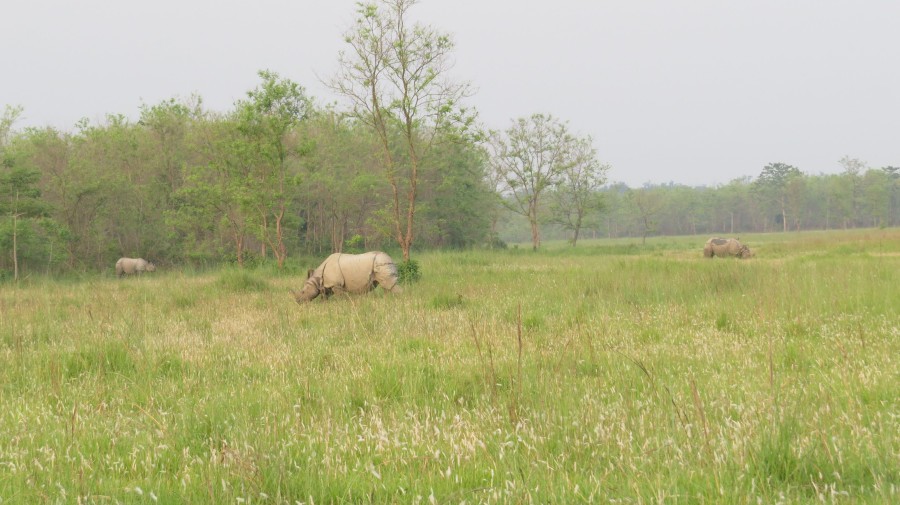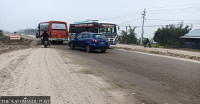National
Thriving tourism in Namuna community forest benefits many local residents
The Namuna Buffer Zone Community Forest in Kawasoti Municipality of Nawalparasi (East) is one of the few places in the country that can be seen as a great example of consistent communal effort.
Nabin Poudel
The Namuna Buffer Zone Community Forest in Kawasoti Municipality of Nawalparasi (East) is one of the few places in the country that can be seen as a great example of consistent communal effort.
The area, once barren and desolate, now hosts a thriving, healthy ecosystem—all because of the efforts of a Community Forest Users’ Group that started the management of the grassland area three years ago. The area, occupying around 130 hectares of land, has green pasture lands and artificial ponds that have now become home to a variety of wildlife—from rhinos to deer to a variety of birds.
Because of this thriving forest life, the community forest area has also become a major point of attraction for domestic and foreign tourists. Several hotels and resorts have cropped up in the area—particularly along the Narayani River bank in Pithauli, Kawasoti, Kumarbarti—with many providing jeep and elephant safaris into the pastures and forests for its guests.
Thus, the forest users’ group has not only helped restore the ecosystem of the forest, but in the process has also helped establish a reliable source of income for locals.
DB Chaudhary, a local tourism entrepreneur who came up with the concept of managing the pastureland, claimed that this could be the very first effort made by a forest users’ group to successfully manage pastures for wildlife in the country.
“Through this initiation, we can learn that everyone can benefit with the rational use of natural means and resources,” said Chaudhary.
The management of pastures and water has also been a very effective measure to control human-wildlife conflict. “Wild animals entered human settlements in search of food and water in the past, but with the restoration of the forests, the availability of food and water in the region has increased for animals.
This means they have stopped coming into human settlement areas,” said Khil Bahadur Gurung, the chairman of the community forest users’ group. “The incidences of human-wildlife conflict and destruction of crops by wild animal has significantly decreased now,” he added.
The community forest charges Rs 50 to a domestic tourist and Rs 250 to a foreigner for visiting the area, which means the forest users’ group earns Rs 400,000 to 500,000 each year from tourists.




 19.12°C Kathmandu
19.12°C Kathmandu















